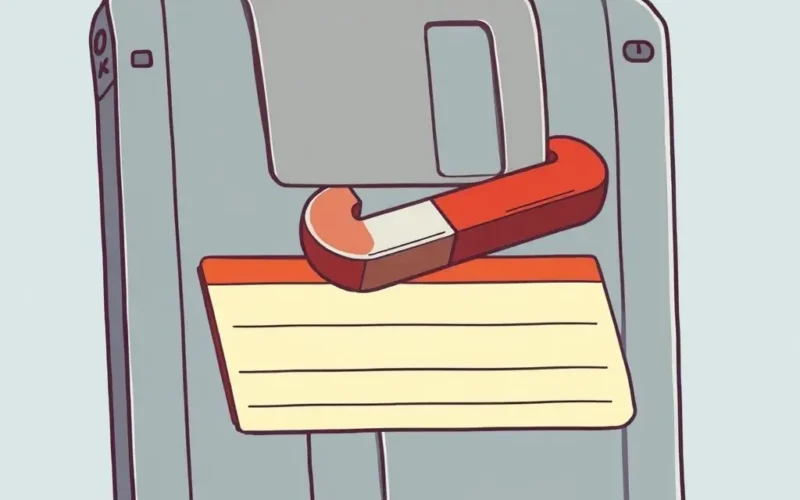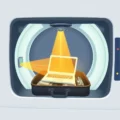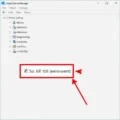Picture this: You’ve got an important presentation saved on your laptop’s hard drive. Suddenly, a fridge magnet falls off and lands near it. Panic sets in! Will your data be scrambled? Will hours of work vanish into the digital ether, zapped by that tiny piece of metal? It’s a scene played out in countless movies and whispered in worried tones by tech newbies. The idea that a simple magnet can wipe a hard drive is a stubborn piece of tech folklore.
But here’s the reality check: While this fear might have held a kernel of truth decades ago, modern hard drives are built of sterner stuff. They are, in fact, remarkably resilient to the kind of weak magnetic fields you encounter in everyday life.
Table of Contents
The Root of the Myth: A Trip Down Tech Memory Lane
Where did this notion come from? Mostly from the days of floppy disks and older CRT monitors. Floppy disks stored data on a thin, flexible magnetic film exposed directly to the environment. A strong enough magnet brought close could easily rearrange the magnetic particles, corrupting or erasing the data. Similarly, CRT monitors used electron beams guided by magnetic fields, and external magnets could distort the image temporarily or even cause permanent screen magnetization if strong enough.
Hard drives from that era were also less shielded and sensitive. The technology has evolved dramatically since then.

Understanding the Modern Hard Drive: More Than Just Metal
To understand why everyday magnets are harmless, you need a basic grasp of how a modern Hard Disk Drive (HDD) works. HDDs store data magnetically on rapidly spinning platters, typically made of glass or ceramic with a thin magnetic coating. Tiny components called read/write heads, mounted on actuator arms, fly incredibly close to the platter surface without touching it. These heads generate or detect magnetic fields to write or read data as sequences of magnetic polarity changes (representing 1s and 0s).
And guess what? The actuator arm that moves the read/write heads across the platters is driven by… you guessed it, powerful magnets! A voice coil actuator, similar in principle to how a speaker works, uses strong magnets and an electromagnetic coil to control the precise movement of the heads. So, modern hard drives literally have powerful magnets embedded within their core functionality.
The Shielding Secret: Why HDDs Are Resilient
Modern hard drives aren’t just built with internal magnets; they’re also designed to be resistant to external magnetic interference. The casing of a hard drive, often made of metal alloys, provides significant magnetic shielding. This shielding acts as a barrier, deflecting or weakening external magnetic fields before they can reach the sensitive platters where data is stored. The internal magnetic fields generated by the read/write heads are extremely localized and precisely controlled to interact only with the tiny magnetic domains on the platter surface.
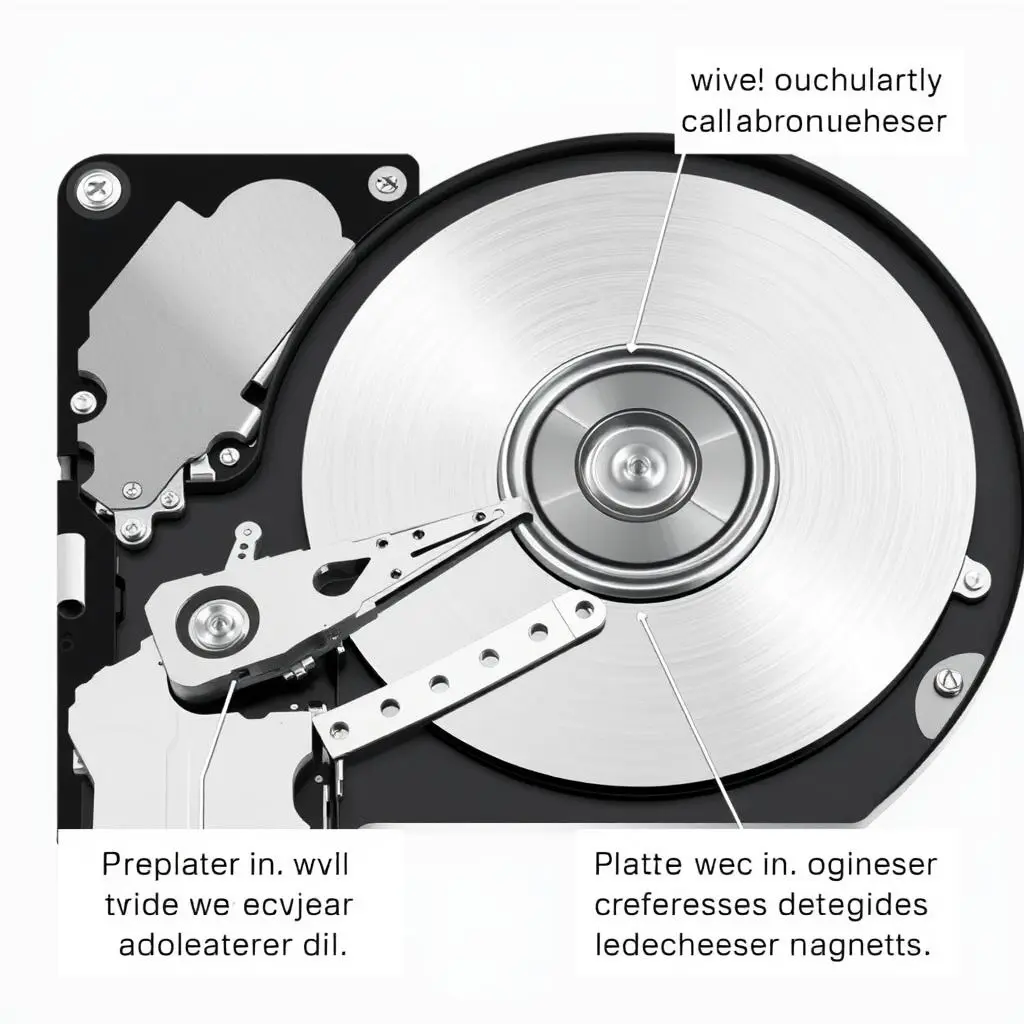
So, What Kind of Magnet *Could* Cause Damage?
To actually corrupt or erase data on a modern, intact hard drive, you would need a magnetic field vastly more powerful than anything found in common household items. We’re talking about incredibly strong magnets, like powerful neodymium magnets (the kind you might find in industrial applications or high-end speakers) brought into very close proximity, or more effectively, a professional magnetic degausser.
A degausser is a device specifically designed to generate a very strong magnetic field capable of randomizing the magnetic orientation of the particles on the platters, thus destroying the data. These aren’t small, handheld devices; they are specialized tools often used for secure data destruction in labs or IT asset disposition centers. Simply waving even a strong neodymium magnet over the top cover of a modern hard drive is unlikely to cause data loss, thanks to the shielding.
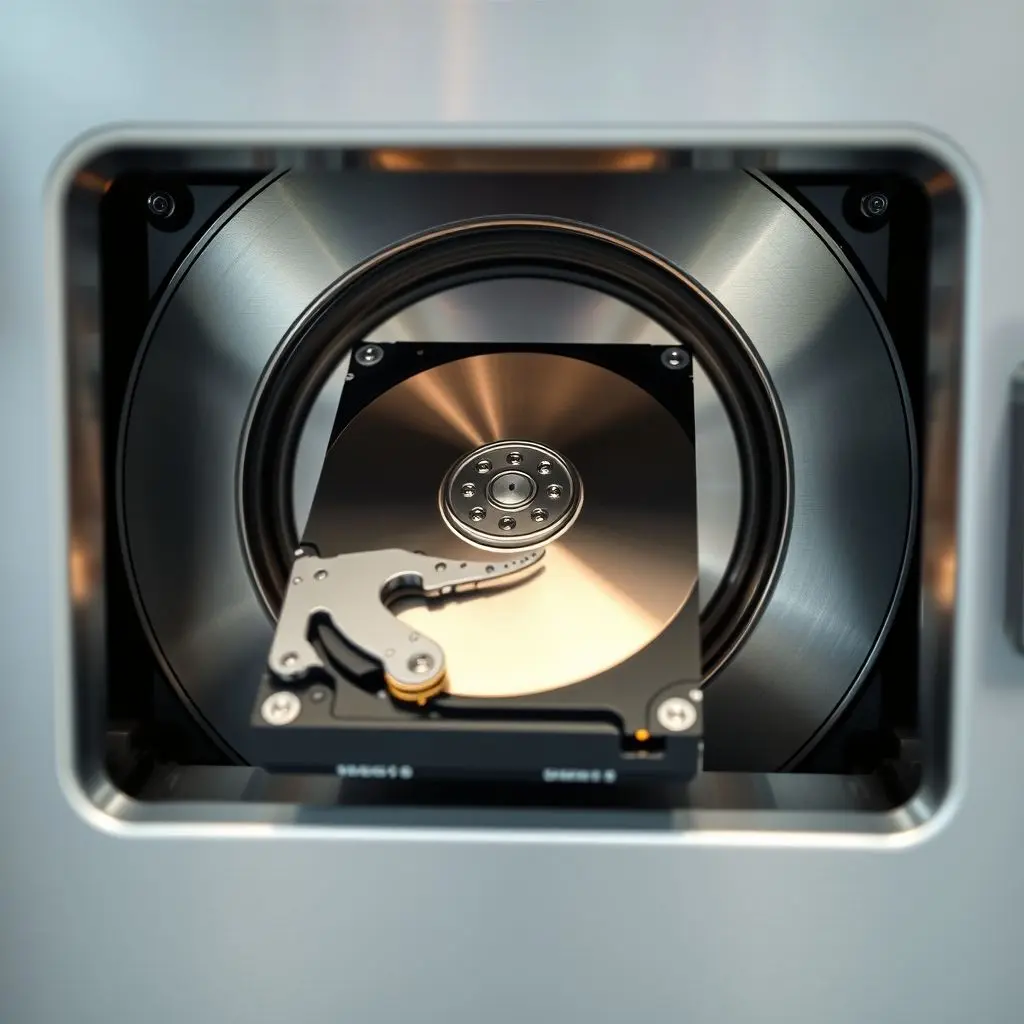
Everyday Magnets: More Annoyance Than Threat
Let’s address the common culprits of magnetic fear: fridge magnets, magnetic latches on bags, magnetic phone mounts, magnetic cat collars, even the magnets in speakers (unless they are massive industrial speakers). These generate relatively weak magnetic fields that dissipate rapidly with distance. The shielding in your laptop or external hard drive casing, combined with the inherent design of the drive itself, makes these negligible threats to your data.
So, rest easy. Your cat strolling across your laptop with its jingling, potentially magnetic collar is not an impending digital disaster.

See the Myth Busted Visually!
Sometimes, seeing is believing. We put together a quick visual explanation debunking this very myth in a YouTube Short. Check it out below!
Effective Ways to Destroy Hard Drive Data
If you actually *want* to ensure data on a hard drive is irrecoverable (e.g., when disposing of old hardware), relying on a weak magnet is pointless. Effective methods include:
- Secure Data Overwriting: Using software that writes random data patterns over the entire drive multiple times.
- Physical Destruction: Shredding, drilling, hammering, or otherwise physically breaking the platters.
- Professional Degaussing: Using a certified, high-powered degausser designed for hard drives.
Frequently Asked Questions (FAQs)
Q: Can putting my phone on my laptop’s hard drive damage it?
A: No. The magnets in phones (for speakers, vibration motors, or magnetic accessories) are far too weak and too far away from the hard drive’s platters to cause any data corruption, especially with the laptop’s casing providing shielding.
Q: Are SSDs (Solid State Drives) affected by magnets?
A: SSDs store data electronically on flash memory chips, not magnetically on platters. Therefore, they are completely immune to magnetic fields. Magnets pose no threat to SSDs.
Q: What about magnets used for securing laptops or tablets (like in cases)?
A: These magnets are generally weak and strategically placed where they won’t interfere with internal components, including hard drives if present. They are not strong enough to affect modern HDDs.
Q: Could a very strong electromagnet damage a hard drive?
A: Yes. An extremely powerful magnetic field, like that generated by a research-grade electromagnet or a purpose-built degausser, could potentially affect or erase data on a hard drive by overwhelming its shielding and scrambling the magnetic patterns on the platters.
Putting the Myth to Bed
So, the next time you see a movie where a character wipes a hard drive with a small magnet, feel free to chuckle. While it makes for dramatic cinema, it’s not based on how modern technology works. Your data is safe from the magnets on your fridge, in your bag, or even attached to your pet’s collar. Modern hard drives are robust, shielded devices designed to withstand the magnetic hustle and bustle of everyday life. The myth of the data-wiping magnet, at least for contemporary drives, is firmly in the realm of historical tech anecdotes.
